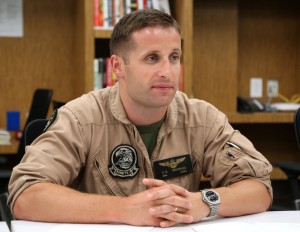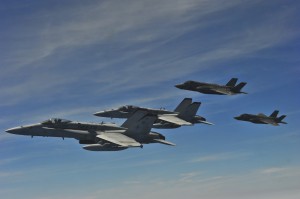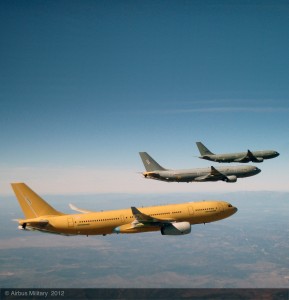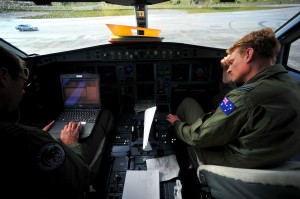2014-08-13 When the Obama Administration sought to shape a status of forces agreement with the Baghdad government it failed to do so.
This meant as well that the Administration left without a plan ever to return to the aide of Iraq.
As Secretary Gates described the situation during his last year as SecDef:
By mid-April, the president asked Austin to explore the feasibility and risks of having 8,000 to 10,000 troops remain in Iraq.
There was some grumbling in Defense over the low number; I thought we could make that work.
But the thumb twiddling continued in both Baghdad and Washington, and in June, as I prepared to leave, the number of troops that might stay on as well as the size of our embassy post-December were totally up in the air.
I don’t know how hard the Obama administration— or the president personally— pushed the Iraqis for an agreement that would have allowed a residual U.S. troop presence.
In the end, the Iraqi leadership did not try to get an agreement through their parliament that would have made possible a continued U.S. military presence after December 31.
Maliki was just too fearful of the political consequences.
Most Iraqis wanted us gone.
It was a regrettable turn of events for our future influence in Iraq and our strategic position in the region. And a win for Iran.[ref]Gates, Robert M (2014-01-14). Duty: Memoirs of a Secretary at War (Kindle Locations 10107-10114). Knopf Doubleday Publishing Group. Kindle Edition.[/ref]
One answer to stated intentions but not how hard was provided by the President’s campaign documents:
Barack Obama and Joe Biden will responsibly end the war in Iraq so that we can renew our military strength, dedicate more resources to the fight against the Taliban and al Qaeda in Afghanistan, and invest in our economy at home. The Obama-Biden plan will help us succeed in Iraq by transitioning to Iraqi control of their country.
Judgment You Can Trust
In 2002, Obama had the judgment and courage to speak out against going to war, and to warn of “an occupation of undetermined length, with undetermined costs, and undetermined consequences.” He and Joe Biden are fully committed to ending the war in Iraq.
A Responsible, Phased Withdrawal
Barack Obama and Joe Biden believe we must be as careful getting out of Iraq as we were careless getting in. Immediately upon taking office, Obama will give his Secretary of Defense and military commanders a new mission in Iraq: ending the war. The removal of our troops will be responsible and phased, directed by military commanders on the ground and done in consultation with the Iraqi government.
Military experts believe we can safely redeploy combat brigades from Iraq at a pace of 1 to 2 brigades a month — which would remove all of them in 16 months. That would be the summer of 2010 — more than 7 years after the war began.
Under the Obama-Biden plan, a residual force will remain in Iraq and in the region to conduct targeted counter-terrorism missions against al Qaeda in Iraq and protect American diplomatic and civilian personnel. They will not build permanent bases in Iraq, but will continue efforts to train and support the Iraqi security forces as long as Iraqi leaders move toward political reconciliation and away from sectarianism.
No Status of Forces agreement meant that the counter-terrorism mission for residual troops and the training mission went off the table.
Whose fault for failing to do is not really the point:
The question is as follows:
Have conditions changed fundamentally with the Baghdad government to put a fair and equitable bargain on the table for the US to play a role in the future of Iraq that makes any sense?
Even more fundamental a question is the following:
Can the Baghdad government play a serious role in reconciliation or is it simply about maintaining the power of the governing faction?

Without answering this question in the affirmative, it makes little sense for the US to commit financial and military resources to prop up this government and, of course, the Russians have reentered the stage in a potential role to do so as well.
We have yet to see George Washington in Iraq; we have seen on a regular basis Tony Soprano.
Enter 2014: how then would the US be able to work with the same government, but only with a new revolving head?
Or to put even more bluntly: if conditions are virtually the same with working with Baghdad in 2014 as when the President determined that no status of force agreement could be negotiated, why is it different now?
Clearly, an important issue is to determine whether the new Prime Minister is someone we can work with to shape a government of reconciliation. To do so means, you have to trust him with money and arms.
Can we trust Shiite politician, Haider al-Abadi, as the new Prime Minsiter?
In a piece which we published on the Second Line of Defense Forum, by Dr. John Shaw, the answer would be to be clearly note.
http://www.sldforum.com/2014/08/making-haider-al-abadi-new-prime-minister-iraq/
Some excerpts from the article highlight clear concerns over whether or not the past experience will not simply be repeated but no in the middle of a war and not at the conclusion of one.
The appointment of Haider al-Abadi as Iraqi prime minister is the culmination of a decade long political ascent that was unheralded but nonetheless remarkable.
Driven into exile by the murder of his father and two brothers by the Baath party, Abadi spent two decades in England acquiring an advanced degree in electrical engineering and becoming a consulting engineer for building elevators.
At the same time he became an active Dawa party organizer in the expatriate Iraqi community and the protégé of Ibrahim al-Jafari, who became a Dawa leader.
At the fall of Saddam Hussein he returned to Baghdad and was rewarded for his longtime Dawa support by being appointed Minister of Communications.
The legacy of the Coalition Provisional Authority is one of epic unchecked corruption.
Haider al-Abadi was not appointed as Communications Minister because of any telecommunication expertise, but because he would be decisive in assuring Dawa control of the projected cellular phone contracts for Iraq, and more important, the control of the $3 billion to be awarded with the contracts and the significant ongoing cash flow as Iraq built out a cell phone capability…..
By 2014, after eight years in power, the tides of corruption and dissention rose again to take out Maliki in his turn.
At this stage there appeared to be only two contenders to replace him:
Jafari and Chalabi, the failed candidates of yesteryear, themselves so tarnished that they dissuaded would be kingmakers from returning to them.
What was needed in a new prime minister was sufficient experience to suggest competence, sufficient Dawa credentials to assure core Shia support, and a profile low enough to limit detractors.
His corruption coefficient was sufficiently old that it was forgotten and its magnitude was lost in the shared participation in the telecom billions.
But he was a critical player in one of the biggest rip offs of the entire Iraqi reconstruction debacle, a scam that has been quietly covered up for a decade.
Haider al-Abadi thus became, in Iraqi terms, the new and honest political figure, the new face for the year 2014.
But what we have is only the old wine in a new bottle, the taste has not improved with age.
The French got it right: Plus ca change, plus c’est la meme chose.










